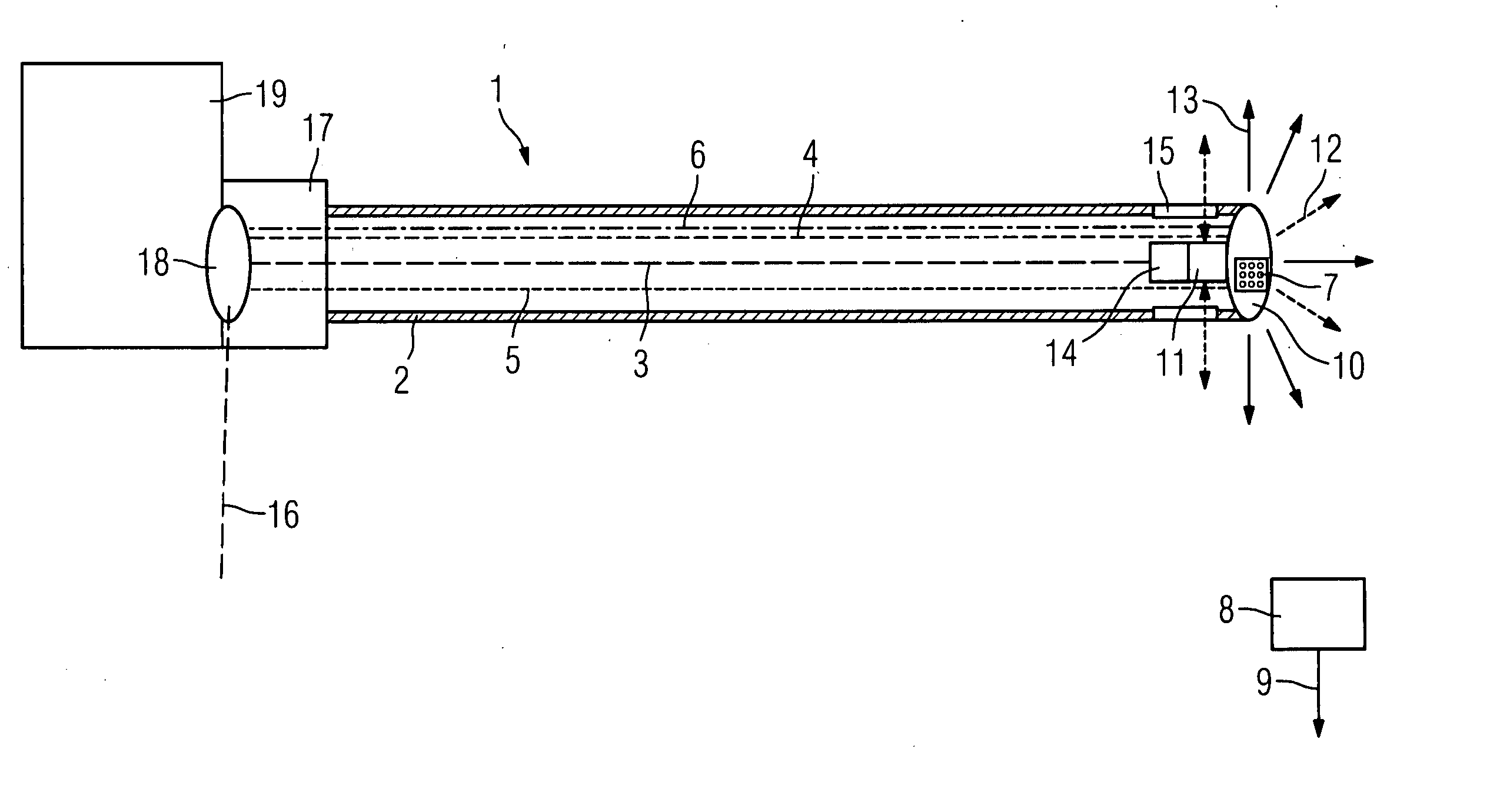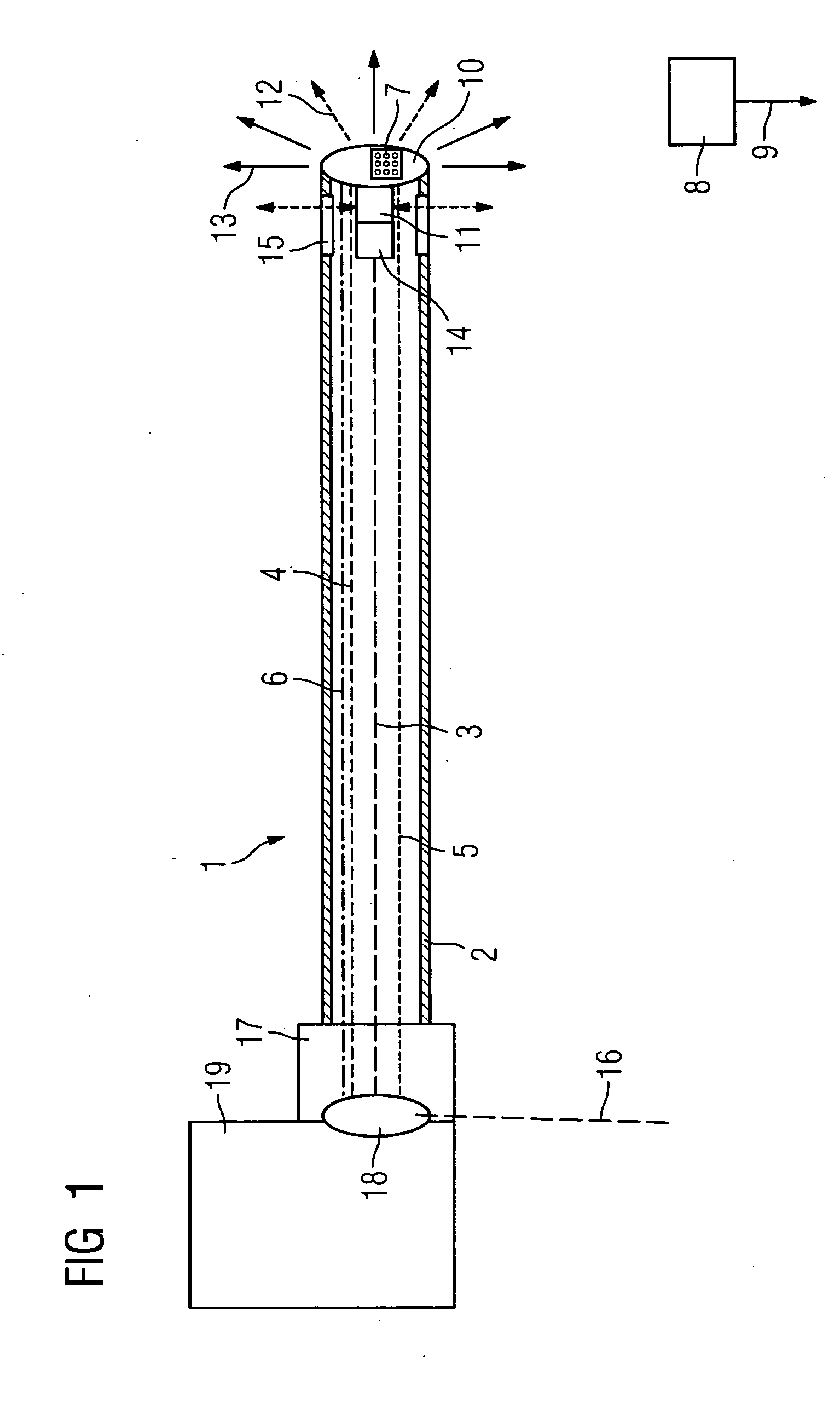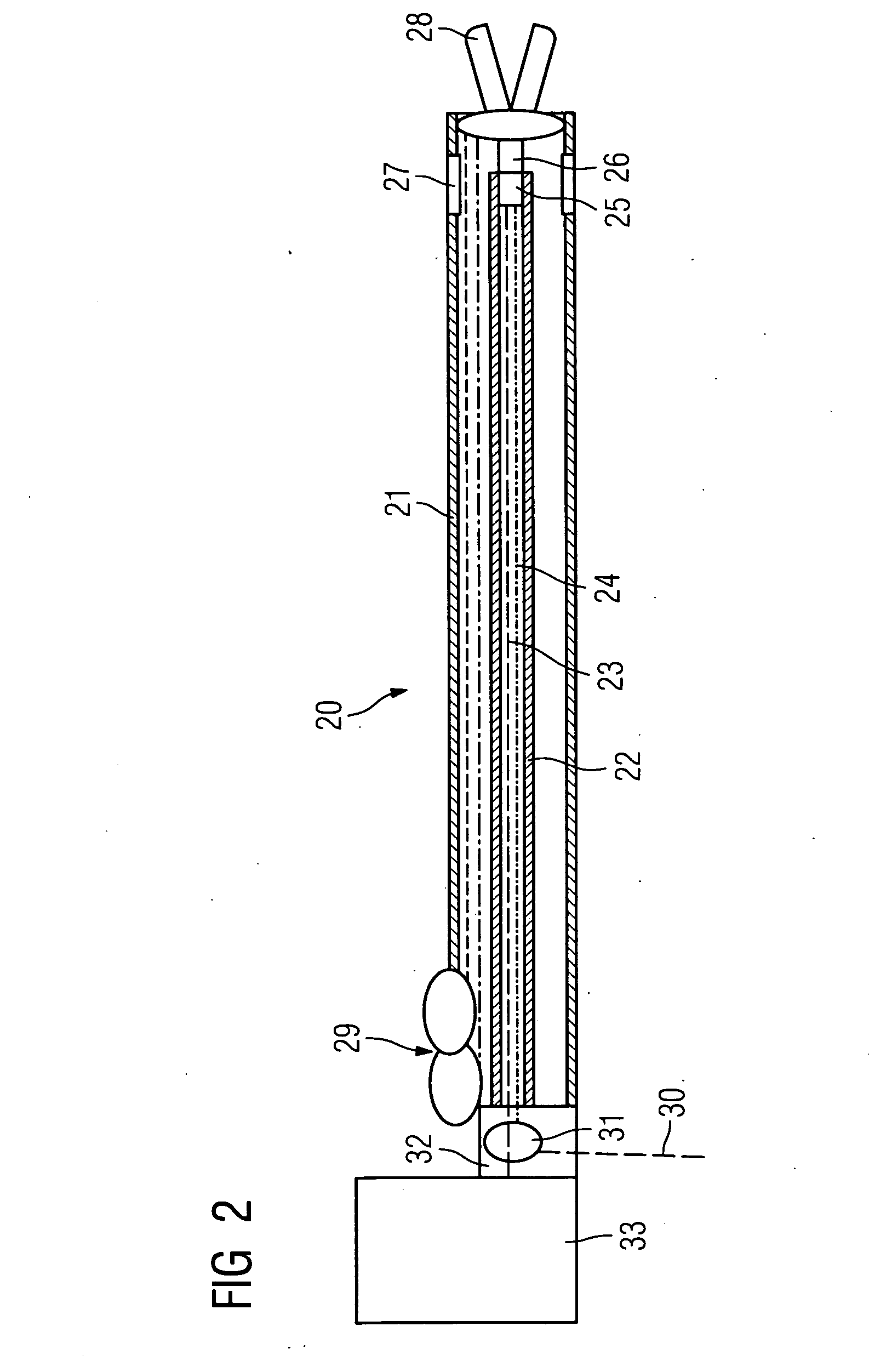Catheter device with a position sensor system for treating a vessel blockage using image monitoring
- Summary
- Abstract
- Description
- Claims
- Application Information
AI Technical Summary
Benefits of technology
Problems solved by technology
Method used
Image
Examples
Embodiment Construction
[0052]FIG. 1 shows an inventive catheter device 1 with a laser angioplasty catheter. The inventive catheter device 1 features a hollow flexible drive shaft 2 in which an OCT signal line 3 and an IVUS signal line 4 are integrated. The OCT signal line 3 is embodied as a glass fiber line in this case. In addition a signal line 5 of the position sensor system which is embodied as an electromagnetic sensor system, and a signal line 6 for the laser energy for performing the laser angioplasty are arranged in the flexible drive shaft 2, with said lines being optical fibers. Thus the surrounding drive shaft 2 produces an integrated unit and which embodies a combination catheter which replaces previously used separate catheters, with the benefit of better image monitoring and treatment of vessel blockages.
[0053] A preferred embodiment is an embodiment not shown here in which the drive shaft 2 does not rotate but only the IVUS and the OCT sensor, in order where necessary to avoid friction bet...
PUM
 Login to View More
Login to View More Abstract
Description
Claims
Application Information
 Login to View More
Login to View More - R&D
- Intellectual Property
- Life Sciences
- Materials
- Tech Scout
- Unparalleled Data Quality
- Higher Quality Content
- 60% Fewer Hallucinations
Browse by: Latest US Patents, China's latest patents, Technical Efficacy Thesaurus, Application Domain, Technology Topic, Popular Technical Reports.
© 2025 PatSnap. All rights reserved.Legal|Privacy policy|Modern Slavery Act Transparency Statement|Sitemap|About US| Contact US: help@patsnap.com



